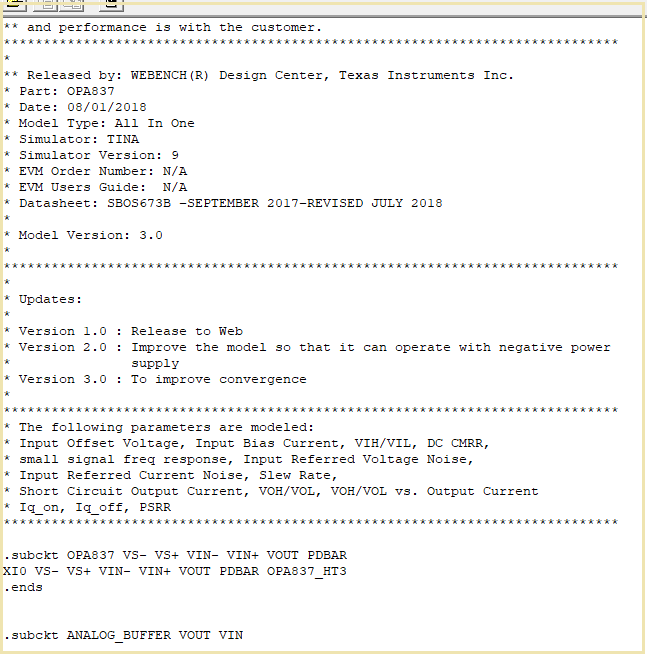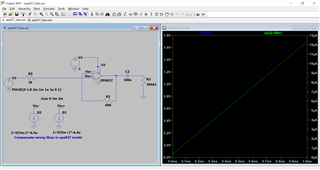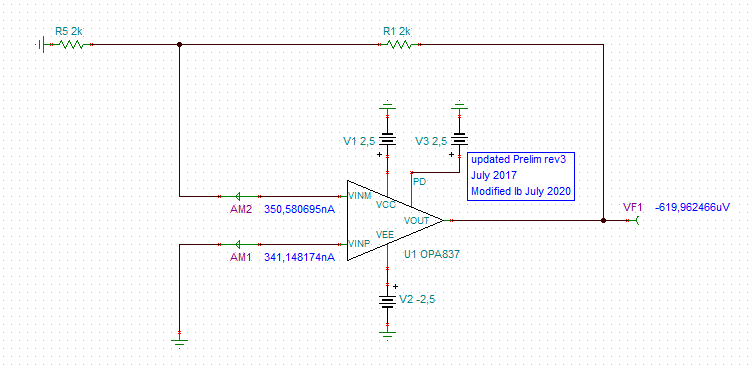Other Parts Discussed in Thread: OPA837, TINA-TI
Hi Experts,
Good day.
This is related to E2E: https://e2e.ti.com/support/amplifiers-group/amplifiers/f/amplifiers-forum/1202385/opa2837-unencrypted-model
The customer comes back and mentioned below.
I get some weird DC results. According to the datasheet, the Ibias is around 700nA out of the input pins. However, in simulation, the current is 6.2uA into the input pins!
I have verified that the input levels are within the specified Vin range. I run the simulation with a single 3V supply but have also tried with +/-3V with the same result.
I will try to add some current sources to cancel out the incorrect bias currents, however, I start wondering what else is wrong.
It is essential for us to be able to design in spice, designing by building the circuits is simply not efficient enough when building nonstandard circuits.
Please investigate and advise.
Regards,
Josel





